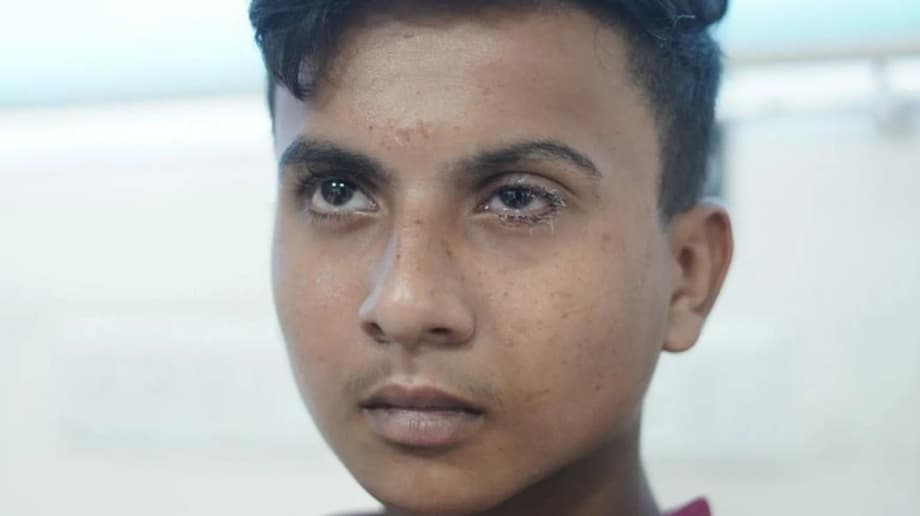A Festival Night Turns Into Emergency Rooms
Diwali nights usually end with family photos and leftover sweets. This year, hospitals in several northern Indian states reported a surge of children arriving with burned faces, torn eyelids, and clouded corneas. The cause was a new holiday fad, plastic pipe devices called carbide guns that ignite a chemical reaction for a loud blast and a shower of sparks. In many cases the reaction delayed, children peered into the barrel to see what went wrong, and the device detonated in their faces.
- A Festival Night Turns Into Emergency Rooms
- What Are Carbide Guns And Why They Are So Dangerous
- How Social Media Turned A Farm Tool Into A Diwali Toy
- Hospitals Overwhelmed, Children Face Uncertain Recovery
- Bans, Raids, And The Law, What Authorities Are Doing
- Why The Injuries Are So Severe And What Doctors See
- Warnings Were There, How Prevention Fell Behind
- What Parents And Communities Can Do Next
- At a Glance
Doctors in Bhopal, Gwalior, and Vidisha described a steady stream of young patients between the ages of 7 and 14. In Madhya Pradesh, health officials counted around 300 people with eye irritation, burns, or vision loss linked to carbide gun blasts. At least two dozen faced severe damage that could permanently limit sight. In Bhopal district alone, hospitals logged more than 100 injuries, and surgeons at major public facilities performed at least 15 operations in the first days after the festival. Nearby Vidisha reported dozens more. Several other states, including Bihar, Chhattisgarh, Jharkhand, Uttar Pradesh, and Delhi, also saw cases.
Ophthalmology teams say many children discovered the devices on short videos labeled as science experiments. Some bought ready made guns for the price of a snack. Others learned to assemble them at home with plastic pipes and gas lighters. The bargain price, the promise of a spectacular blast, and the ubiquity of online tutorials drew in school age children who saw the device as a substitute for traditional firecrackers.
National referral centers also felt the shock. Specialists at a leading eye institute in Delhi documented 190 eye injuries in the Diwali period, an increase from the previous year, and counted roughly 18 to 20 cases tied specifically to carbide guns. Most patients were boys and teens. Nearly half had open globe injuries that needed emergency surgery, and a significant share left with moderate to severe visual impairment.
What Are Carbide Guns And Why They Are So Dangerous
The device looks simple, often a short plastic pipe with a chamber for a chemical pellet and a lighter port. The fuel is calcium carbide, a gray solid used in industry that reacts vigorously with water. When water touches the carbide, it releases acetylene gas. A spark ignites the gas, pressure rises inside the pipe, and a sharp blast follows. That sound and flame attract young users who mistake it for a safe party trick.
How the reaction works
Calcium carbide and water produce two hazards at once. The acetylene gas is a highly flammable fuel. The reaction also leaves behind calcium hydroxide, a caustic alkali. In these makeshift guns, explosions do not vent safely. They can eject plastic shards into the face and eyes. The heat scorches eyelids and eyebrows. The residue is alkaline, so it penetrates tissues, clings to the surface of the eye, and continues to injure cells long after the blast. Ophthalmologists warn that alkali burns tend to be deeper and more destructive than common acid burns because alkaline chemicals saponify fat in cell membranes and travel through tissue planes. The result can be persistent pain, cloudy corneas, and scarring that blocks vision.
Unpredictable delay and the impulse to look in
A recurring pattern made the injuries worse this year. The device would misfire on the first try, the gas would continue building, and curious users would look down the barrel. The ignition then triggered an explosion at close range. Doctors repeatedly heard accounts that matched this sequence. Patients arrived with lacerated eyelids, ruptured corneas, and foreign particles embedded deep in the eye. Some could not perceive light in the injured eye when examined in emergency rooms.
Not a firecracker, a chemical bomb
Eye specialists have urged the public to treat these devices as chemical explosives rather than festive toys. The country regulates the sale of calcium carbide because misuse is dangerous, yet the substance still circulates widely. It is used by some traders to ripen fruit despite food safety rules and by farmers to scare monkeys in orchards and fields. When that supply meets viral clips and do it yourself content, a risky farm tool becomes a plaything in urban neighborhoods.
How Social Media Turned A Farm Tool Into A Diwali Toy
Short videos on popular platforms portrayed carbide guns as budget friendly, dramatic, and easy to make. The posts often framed them as clever chemistry or a new party popper. Online marketplaces listed them as PVC monkey repellers, and quick tips showed how to swap parts or pack extra material for a louder bang. For children on holiday, the step by step visuals lowered the barrier to trying it themselves.
Security and municipal teams in Madhya Pradesh later recovered dozens of these devices from small shops. Officers said they were hard to trace through conventional channels. Many were sold in back lanes in the days just before the festival. Others were improvised at home using items from hardware stores and lighter refills. The devices were cheap enough to buy with pocket money, and a single packet of calcium carbide could fuel many attempts.
Senior officials in Bhopal describe a cat and mouse effort to monitor a fast moving trend. They had warned licensed sellers, but the wave of injuries showed a larger shift to informal vendors and do it yourself kits driven by online content.
After the rush of emergency cases, the Bhopal Collector, Kaushlendra Vikram Singh, addressed the challenge. He said that the devices were not entering through the usual shop networks and that people were learning to make them from videos, which complicated enforcement.
Such incidents have not come to light in previous Diwalis. We had, on October 9, issued directions and checked for carbide guns with those with licenses to sell firecrackers. In this case, people made their own guns by learning from YouTube. Small vendors who sell firecrackers only two or three days before Diwali also sold them.
Hospitals Overwhelmed, Children Face Uncertain Recovery
Public and private hospitals around Bhopal reported long queues at emergency desks the morning after the festival. Children arrived holding cloth to their eyes or with protective patches already in place. At Hamidia Hospital, surgeons operated on multiple cases, and pediatric patients with severe burns were admitted for monitoring. Other facilities in the city, including the regional medical college and AIIMS Bhopal, handled a share of complex injuries. In some districts, doctors warned that a subset of patients might never regain sight in the injured eye.
In neighboring Vidisha and towns further afield, similar scenes played out. Surgeons dealt with ruptured globes, corneal tears, and foreign bodies lodged in the anterior chamber of the eye. In several cases, shrapnel injuries were accompanied by chemical burns that caused white, opaque corneas within hours. Some children needed corneal grafts to close large perforations, and others required multiple procedures to rebuild eyelids and remove embedded fragments.
Delhi based specialists also reported a clear spike in cases during the holiday period. Most were young males, and nearly a fifth had both eyes affected. About half of the patients with severe damage needed immediate surgery to save the structure of the eye. A number left with lasting visual impairment despite timely care.
India’s leading body of eye physicians said the pattern across states pointed to a preventable crisis and urged strong action.
Dr Partha Biswas, president of the All India Ophthalmological Society, said the devices should be banned and that hospitals and police must be ready to respond.
The rise in these preventable, blinding injuries is alarming and unacceptable. We urge the government to act decisively and immediately to save vision and lives.
Bans, Raids, And The Law, What Authorities Are Doing
State leaders moved to halt the spread after the injuries mounted. In Madhya Pradesh, district administrations in Bhopal and Gwalior issued orders banning the sale, purchase, and storage of carbide pipe guns. Officials instructed sub divisional magistrates to inspect firecracker outlets, seize stock, and file First Information Reports for violations. Police seized dozens of devices and packets of calcium carbide and detained sellers in several districts. Earlier raids in Bhopal had already recovered stock from low profile shops tucked into small neighborhoods.
State authorities signaled the use of strong statutes to prosecute offenders. Internal notes to district officials referenced enforcement under the Arms Act 1959, the Explosives Act 1884, and the Explosive Substances Act 1908. Administrators also issued festival season prohibitory orders to stop sales during local events and weddings. The effort extended to online channels, where officers flagged listings that sold the devices as farm deterrents or festival toys.
The Chief Minister, Mohan Yadav, called the situation a matter of grave concern and directed an immediate prohibition on illegal manufacture, sale, and use of the devices. District collectors and police units were told to continue inspections, remove items from markets, and file cases against repeat violators.
These cases are a matter of grave concern. An immediate prohibition must be imposed on illegal manufacture, sale, and use of this device in the state.
Other states also began prohibitions after local injuries were reported. In Bihar, hospitals recorded dozens of cases and surgeons carried out many operations to deal with eye damage. Administrators said teams would track sellers and confiscate stock in the run up to the next round of festivals.
Why The Injuries Are So Severe And What Doctors See
Blast injuries from carbide guns combine several threats. The pressure wave strikes at close range. Plastic fragments behave like shrapnel. Flames scorch the delicate skin around the eyelids. The alkaline residue then continues to damage tissue for hours if not cleared. Together, these mechanisms produce complex eye trauma that is hard to treat quickly and cleanly.
Ophthalmologists describe several common findings. Open globe injuries are tears through the wall of the eyeball, usually the cornea or sclera. These need urgent closure to maintain the shape of the eye and prevent infection. Anterior chamber foreign bodies are fragments driven into the front part of the eye, which can trigger inflammation and scarring. Alkaline burns from calcium hydroxide create a white haze on the cornea, destroy the limbal stem cells that help the cornea heal, and can lead to long term scarring and neovascularization. Weeks later, complications can include cataract, glaucoma from high eye pressure, and retinal damage.
Advisories from district collectors also warned that the gas and chemical byproducts could harm more than the eyes. Acetylene is a combustible gas that displaces oxygen, and prolonged exposure in poorly ventilated spaces can injure the brain and nervous system. Parents reported headaches, nausea, and dizziness in children shortly after blasts inside closed rooms. Senior clinicians urged families to avoid indoor use of any device that ignites chemical fuel and to seek immediate care when eye exposure occurs.
Warnings Were There, How Prevention Fell Behind
Researchers in central India had already flagged the risk from carbide guns. A study of patients in 2023 documented vision threatening injuries, noted the lack of awareness about the risks, and recommended public education and tighter control of the raw materials. Local officials now say they underestimated the speed with which social media clips could turn a niche farm deterrent into a post dinner toy for children.
Inside district offices, staff were stretched by pre festival events and routine duties. Inspections of licensed fireworks sellers took place weeks before Diwali, but much of the trading appears to have shifted to pop up vendors operating for a few days or to home assembly using basic supplies. Enforcement teams could not easily track those pathways, and no large public campaign warned parents and children about the specific risks of carbide devices.
By the time the first wave of hospital cases appeared, administrators were already in reaction mode. They issued blanket bans and mobilized raids, but online videos and reels kept spreading, showing teenagers priming pipes, waiting for the delayed pop, and filming the blast. That dynamic, officials say, made this Diwali one of the hardest to police in recent memory.
What Parents And Communities Can Do Next
Doctors and eye health associations argue that policy and public education must move together. Their recommendations are clear. Ban the manufacture, sale, and use of carbide guns, treat violations with criminal charges, and prepare hospital emergency units ahead of festivals. At the same time, parents, schools, and community leaders can reduce risk by acting early and speaking directly to children about what these devices do to eyes and faces.
For families, the guidance from emergency physicians is straightforward. If chemical or blast exposure occurs, irrigate the eye with clean water as soon as possible and continue flushing while arranging transport to the nearest hospital. Do not rub the eye or apply home remedies. Cover the eye loosely with a clean cloth or shield until a doctor can examine the injury. Children who were near blasts, even without obvious damage, should be checked if they feel pain, light sensitivity, or see blurred shapes.
For schools, the next few weeks matter. Assemblies and classroom talks can explain how delayed ignition leads to a close range blast. Short, credible videos can counter viral content that treats the device as a harmless experiment. Resident welfare groups and local shopkeepers can report sales and alert authorities when they see the devices labeled as farm tools or novelty items. Platforms can help by removing tutorials that demonstrate assembly or use.
Eye specialists say that with targeted messaging and consistent enforcement, the country can avoid a repeat during upcoming festival days and weddings, when these guns often reappear to punctuate celebrations.
At a Glance
- Hundreds of people, many of them children, suffered eye injuries from carbide guns during Diwali across several northern Indian states
- Madhya Pradesh recorded around 300 injuries, with at least two dozen facing severe damage and many surgeries performed in Bhopal and nearby districts
- Hospitals in Bihar reported 170 cases and dozens of operations; Delhi specialists documented 190 Diwali period eye injuries, with 18 to 20 tied to carbide guns
- Carbide guns mix calcium carbide and water to release acetylene gas; explosions eject shards and leave alkaline burns that can cause lasting vision loss
- Authorities in Bhopal and Gwalior banned the devices, seized stock, and filed FIRs; enforcement referenced the Arms Act and Explosives laws
- Experts from the national eye association called for a nationwide ban, public education, and hospital readiness to prevent more cases
- Officials admit enforcement struggled against do it yourself assembly and viral videos that portrayed the devices as cheap experiments
- Doctors advise immediate eye irrigation after exposure, no home remedies, and urgent hospital care to limit long term damage




